For many years, I was mystified by the title of the seventeenth-century French Christmas carol “Quelle est cette odeur agréable ?”[1] When the Mormon Tabernacle Choir and Orchestra performs Mack Wilberg’s ethereal arrangement[2] that begins with the words:
Whence is that goodly fragrance flowing stealing our senses all away?
Never the like did come a-blowing, shepherds, in the flow’ry fields of May,
have you ever wondered, as I had, why a particular smell should be taken as a sign of Christ’s birth? The qualifier “goodly” tells us that the odor has nothing to do with the shepherds’ flocks, nor with the cattle in the manger. Moreover, the original French text confirms that it was not the fragrance of the springtime flowers, but something completely new — overpowering and rapturous.[3]
To comprehend these word pictures, we have to know something of how early Christians linked traditions about the life of Adam and Eve to the story of the Nativity of Christ.
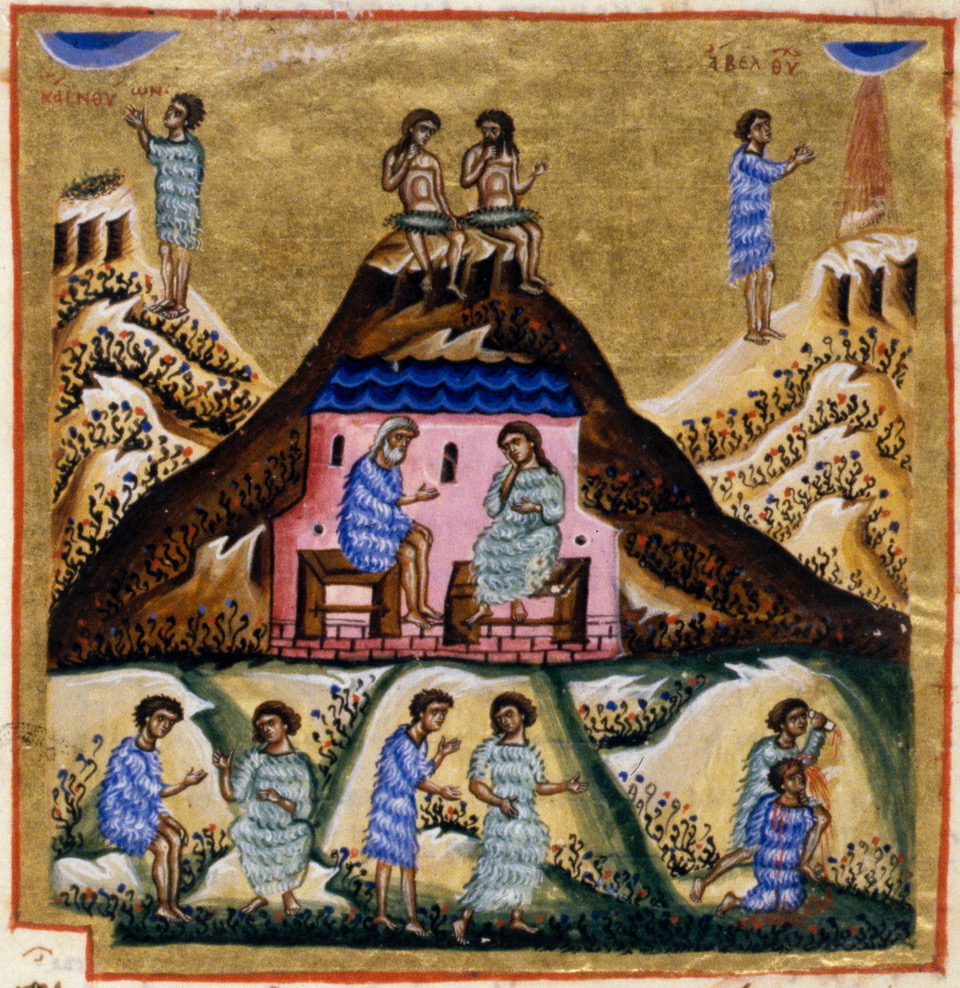
Figure 1. Adam and Eve Outside Paradise, Cain and Abel, twelfth century CE
Adam and Eve’s “Cave of Treasures”
Some ancient traditions record that Adam and Eve lived on a sacred mountain. Similar pictures of sacred mountains also appear in conjunction with other biblical figures. In each case, the mountain is divided into three vertical sections recalling, in simple terms, the three major divisions of ancient temples, as illustrated in the figure above and in some of the figures described later on. The lower regions, roughly corresponding to the outer courtyard of the temple, can be seen as the place of sinners, who are exhorted to seek penitence. The middle section of the mountain, corresponding to the Holy Place, can be seen as the dwelling of the people of the covenant. The top of the mountain can be seen as a Holy of Holies, where the presence of God Himself can be experienced.
At the bottom of the mountain shown in the figure above, Cain has words with Abel, leads him out to the field, and then executes his murder. On the peak, symbolizing the heavenly domain, we see Adam and Eve clad only in their fig-leaf aprons. Tongues of flame adorn the upper parts of the hill,[4] suggesting the glory of the Divine Presence.
In the heart of the mountain, an aged Adam and Eve, clad in robes of animal skins, confer within what early Christian texts sometimes called the Cave of Treasures.[5] Whether or not there was literally a cave just outside of Eden is not of concern here. The accounts are clearly figurative, and what is of interest are the echoes of temple teachings in their rich symbolism.[6] According to these sources, the specially-prepared cave became a safeguard for gold, frankincense, and myrrh, retrieved by three angelic messengers[7] from the Garden of Eden as a help to Adam and Eve in their new condition.[8]
In Old Testament times, gold was the symbol of kingship, frankincense the offering of priests, and the oil of myrrh—“known as the ‘dew of resurrection’[9]—had anointed the royal high priests after the order of Melchizedek and transformed them into sons of God.”[10] These and other details make it clear that the Cave of Treasures was imagined as a sort of temple, a figurative replacement for the temple-like Garden of Eden where Adam and Eve had formerly lived.[11] Though dark and dreary compared to their former surroundings, the cave is presented as a place of instruction, affording the couple protection from the world in their state of vulnerability, and providing privacy and security for the treasures that were kept therein.[12]
But it was not meant to be mankind’s final home. “Through the atonement of Christ” and “by obedience to the laws and ordinances of the gospel,”[13] God had prepared a way for Adam and Eve to move forward. According to an Armenian text, once their period of preparation was over, “the Lord took pity on them, and he sent his angel to take them out of the darkness, and he guided and brought them into this bright world.”[14] There, in answer to prayer, they continued to receive the additional light and knowledge they would need as they readied themselves and their children for a permanent return to God’s presence.[15]
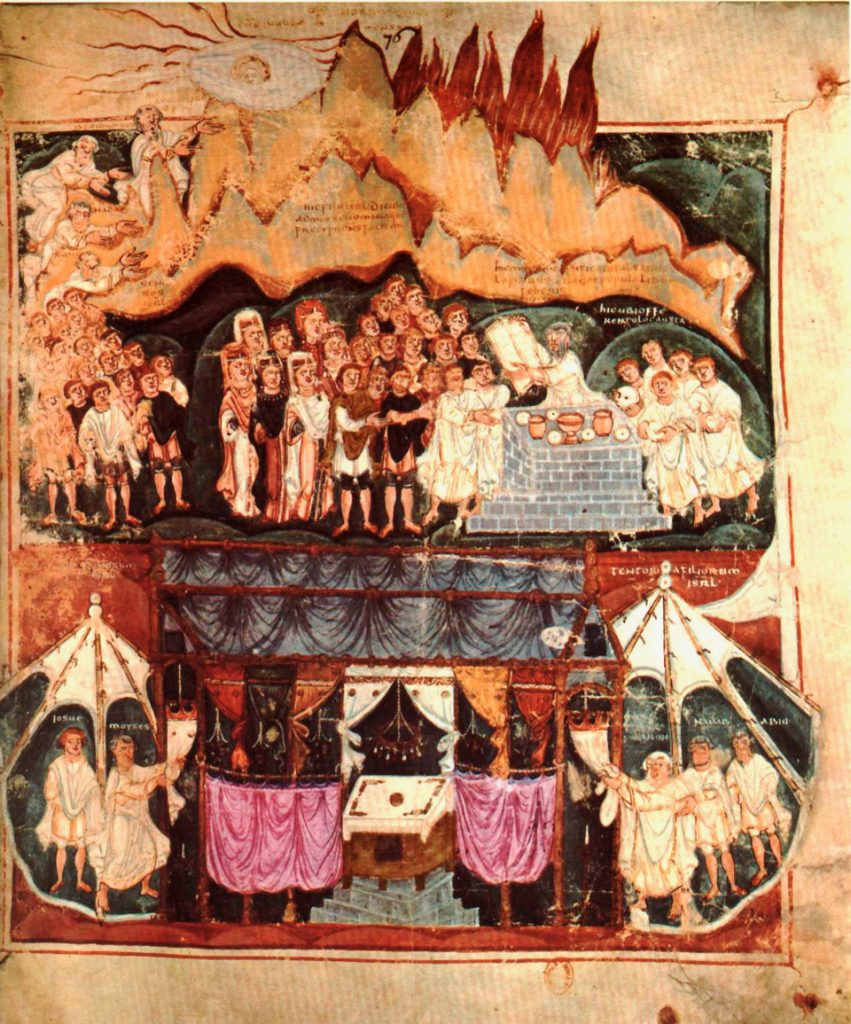
Figure 2. Mount Sinai and the Tabernacle, Tours Pentateuch, ca. 600 CE
Moses Administering Covenants at Sinai
The same three divisions of a sacred mountain appear in an illustration from an early Bible manuscript. Recall that when God appeared to Moses on the top of Mount Sinai, Aaron and the priests ascended only part way, while the rest of the children of Israel stayed at the very foot, unwilling and unprepared to begin the climb required to meet Jehovah face to face.[16]
In this illustration, Moses, in the top register, “accompanied by Aaron, Nadab, and Abihu, approaches the Lord, whose head appears in a cloud at the top of Mount Sinai.”[17] Within the cave in the middle scene, is a gathering of Christians who, in the pattern of ancient Israel, make covenants under the direction of Moses.[18] At the bottom, is a Christianized version of the Tabernacle.[19] Here, the ancient leaders of Israel part the outer veil, earnestly inviting all those outside the covenant to enter in and begin their ascent.
Figure 3. The Nativity of Christ, fifteenth century CE
Imagery of the Sacred Mountain in the Nativity
An icon of the Nativity from the Orthodox tradition also features a mountain divided into three parts.[20] At the top, the heavenly angels sing praises to God, and in the middle, near the cave,[21] Mary rests outside while the baby Jesus slumbers within. At the bottom left, Joseph is tempted by the Devil to disbelieve Mary’s story about the baby’s conception, while, at right, similarly doubting midwives wash the baby Jesus.[22]
Though the visit of the Magi is generally portrayed as having taken place at a later time when Mary and Joseph were living in a house, the Magi in this image and in the apocryphal Protoevangelium of James[23] “come to pay homage at the Bethlehem cave—an interesting mixture of Matthew and Luke,”[24] and a motif that harmonizes with themes in the story of Adam and Eve’s Cave of Treasures.
Early Christian texts depict the “treasures” that had once been given to comfort and instruct Adam and Eve as reappearing symbolically in the later gifts of the Wise Men to the Christ child. In this case, the birth cave had itself become a literal Holy of Holies, since the Son of God lay within. The three gifts of the Magi symbolized God’s promise of an eventual recovery of what mankind had lost when they were first shut out from Paradise,[25]—including the restoration by Christ of the higher priesthood and its distinctive ordinances. Describing how early Christians connected the birth of Christ with the royal coronation psalm of Melchizedek, C. S. Lewis writes:[26]
We find in our Prayer Books that Psalm 110 is one of those appointed for Christmas Day. We may at first be surprised by this. There is nothing in it about peace and goodwill, nothing remotely suggestive of the stable at Bethlehem. It seems to have been originally either a coronation ode for a new king, promising conquest and empire, or a poem addressed to some king on the eve of a war, promising victory… The note is not “Peace and goodwill” but “Beware. He’s coming.” Two things attach it to Christ with an authority far beyond that of the Prayer book. The first of course … is that He Himself did so; He is the “lord” whom “David” calls “my Lord.”[27] The second is the reference to Melchizedek. … For He, like Melchizedek claims to be Priest, though not really of the priestly tribe, and also King. Melchizedek really does point to Him; and so of course does the hero of Psalm 110 who is a king but also has the same sort of priesthood.
Summarizing the significance of the return of the gifts originally given to Adam to the Christ child, the Methodist Old Testament scholar Margaret Barker writes:[28]
Gold, frankincense, and myrrh were symbolic of the temple… Jesus was the new Adam, the new creation, opening the way back to Eden and restoring the true temple.
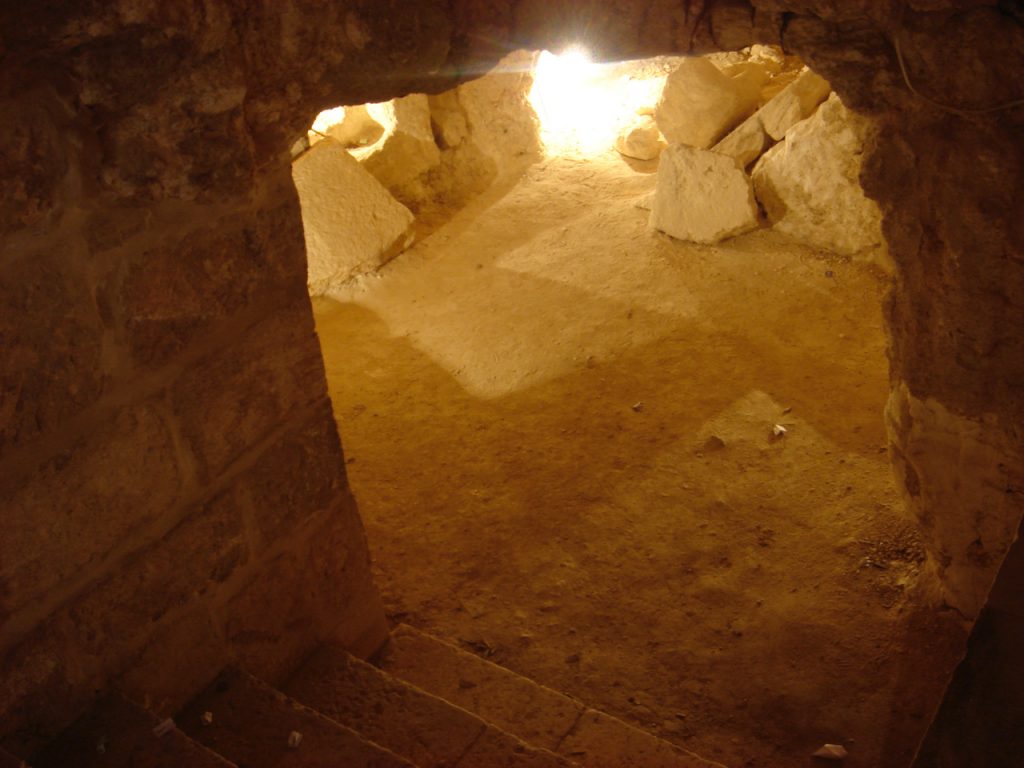
Figure 4. Funerary Chamber Adjoining the Grotto of the Teachings at Eleona
Traditions About a Sacred Grotto on the Mount of Olives
Within an underground grotto on the Mount of Olives, “a stone’s throw from the place of His Ascension,[29] and from where, in the sight of the Temple, He foretold the ruin of Jerusalem and the end of the world,”[30] early traditions record that Jesus found a place “where He could teach His disciples those things that were beyond the understanding of His usual hearers.”[31] More specifically, the fourth-century bishop Eusebius passed on “a true report … that in that cave the Savior of the Universe initiated the members of his guild in the ineffable mysteries.”[32]
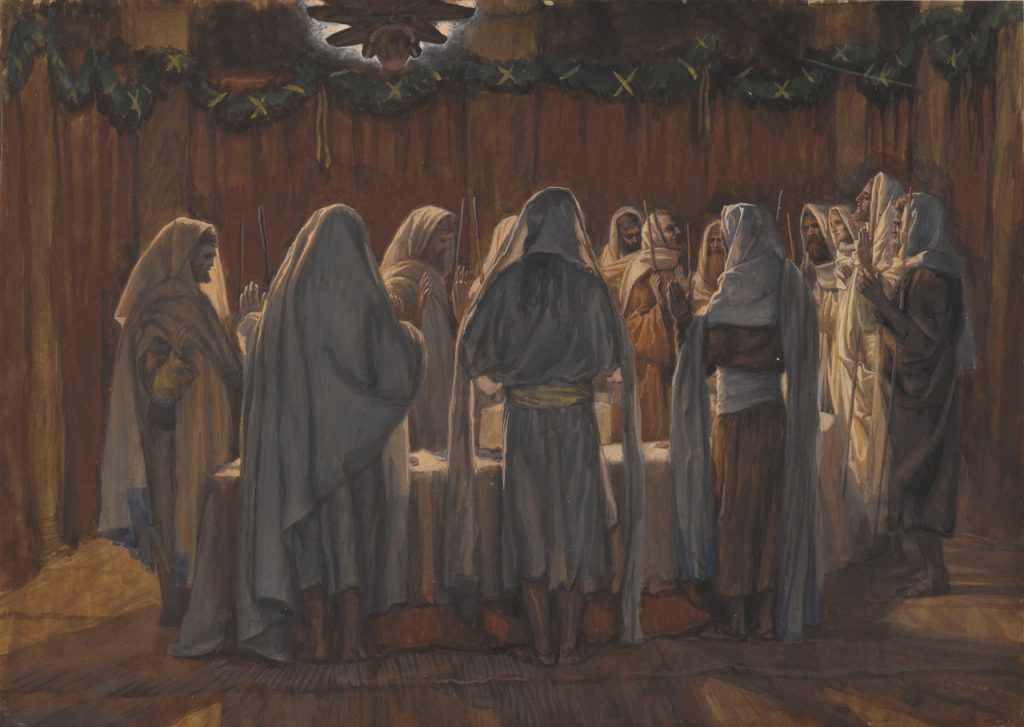
Figure 5. J. James Tissot, 1836-1902: The Last Supper, 1886-1894
An instance of such an initiation may have occurred on the very night Jesus was arrested,[33] He having perhaps repaired to such a place to give His final instructions to His apostles[34] before going down to Gethsemane.[35] The Gnostic Acts of John recounts that on that night a prayer circle was formed by the apostles, with Jesus at the center: “So he told us to form a circle, holding one another’s hands, and himself stood in the middle.”[36]

Figure 6. The Three Magi, Basilica of St. Apollinare Nuovo, sixth century CE
The Symbolism of the “Goodly Fragrance”
Circling back to where this essay started, I was pleased to find recently that the memory and significance of the visit of the Magi had been preserved in the 15th-century French Christmas carol Noël Nouvelet.[37] In the carol, the smell of the manger is revealed to be the fragrance of Paradise, emanating from the gifts originally procured in the primeval Garden. The three “kings” bring their gifts to the Christ child, tokens of the restoration of divine blessings once given to Adam and Eve, while the birthplace in Bethlehem — portrayed in the carol as a small garden — is transformed into an earthly Eden:
Gold the first did carry; myrrh the next did bring.
And the third bore incense, the garden perfuming,
So that in paradise I seemed to dwell.
In our day, such traditions—those traditions that connect Christ’s birthplace to the Garden of Eden and that recognize the myrrh as the symbol of Christ’s anointing as the Son of God — seem have been almost completely forgotten.[38] For example, note the words of the familiar nineteenth-century carol “We Three Kings of Orient Are.”[39] In this Victorian carol, the myrrh is described in terms of an ordinary burial ointment that is applied as the standard preparation for Christ’s death and entombment:
Myrrh is mine; its bitter perfume
Breathes a life of gathering gloom;
Sorrowing, sighing, bleeding, dying,
Sealed in the stone-cold tomb.
What a bleak picture this uninspired verse paints when compared to the triumphal symbolism of anointing with myrrh in the ancient Israelite temple as the seal of eternal Sonship, and the original meaning of Jesus’ title as the Christ. Explains A. E. Harvey:[40]
The Hebrew term [for “Messiah”], meaning “the Anointed One,” was translated into Greek as Christos, and gave Jesus the name by which he was to become universally known. It was an old title, originally used of the first kings of Israel. But in the time of Jesus it was reserved for a divinely-appointed … figure whom (it was widely believed) God would soon send into the world to inaugurate a new and blessed age for the benefit of his chosen people (or of the elect among them).
Figure 7 – Theophane the Greek: Transfiguration Icon, 1403
This same symbolism of anointing, of course, applies to all Christians, who have taken upon themselves the name of Christ and who have received the promise that they “may become the sons of God; that when he shall appear we shall be like him.”[41] An anticipatory fulfillment of this promise was experienced by Peter, James, and John, when they were themselves “transfigured”[42] in likeness of Christ, and received the “more sure word of prophecy” to which all Christians are admonished to “take heed… until the day dawn, and the day star arise in [their own] hearts.”[43] In recounting a vision of the given at that time to the three apostles, the second-century Apocalypse of Peter not only describes the visual beauty of the transfigured earth, but also the unmistakable divine fragrance that “was borne from there to where [they] were.”[44]
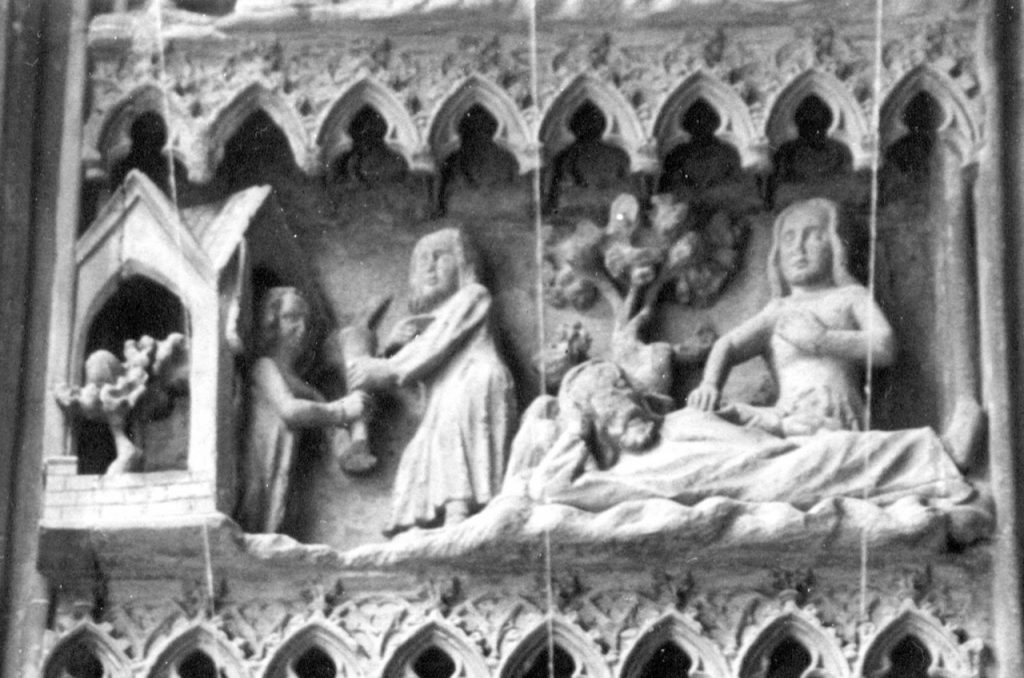
Figure 8. The Quest of Seth for the Oil of Mercy, Heilig-Kreuz-Münster (Holy Cross Minster) in Schwäbisch Gmünd, Germany1351-1360
“Good Tidings of Great Joy”
Tradition records that Adam, after recounting the story of the Fall to his posterity at the gathering before his death, asked Eve and Seth to retrieve oil from the Tree of Life so he could receive an ordinance of anointing.[45] Hugh Nibley summarizes:
[W]hen at the end of his life Adam felt the accumulating effect of these mortal blows upon him and sensed the approach of death, he implored Eve, “Go with my son Seth near to Paradise… and pray God to… send his angel to Paradise, and give me of the tree out of which the oil floweth, and bring it me, and I shall anoint myself and shall have rest from my complaint.”[46] He was asking for the “oil of mercy,” which alone could reverse the seven “blows of death” inflicted as a result of the Fall.[47] For the ultimate healing of the oil of mercy was not to be given to men until the coming of the Messiah, as Eve and Seth were informed by an angel who met them on the way back to the Garden to fetch the oil for Adam.[48] When the Messiah did come, according to the Clementine Recognitions,[49] he provided that all who come to His kingdom should be anointed with the oil of the Tree of Life, the very oil with which the Father had anointed Him to be the initium omnium.[50] The final culmination of the whole plan of salvation, according to a very old Judeo-Christian writing, will be when Michael opens the gates and bestows the healing oil on the righteous as “the hundred-fold reward of those who have worked and toiled diligently.”[51]
Thus, it seems that the three priceless and eternal gifts, first given to Adam and Eve by three heavenly messengers and whose restoration in the meridian of time was symbolized by the visit of the Magi to the Christ child, may also become our own, through the Atonement of Christ coupled with our “diligence and obedience.”[52] The story of Jesus’ birth is indeed “good tidings of great joy, which shall be to all people.”[53]
References
al-Kisa’i, Muhammad ibn Abd Allah. ca. 1000-1100. Tales of the Prophets (Qisas al-anbiya). Translated by Wheeler M. Thackston, Jr. Great Books of the Islamic World, ed. Seyyed Hossein Nasr. Chicago, IL: KAZI Publications, 1997.
al-Tha’labi, Abu Ishaq Ahmad Ibn Muhammad Ibn Ibrahim. d. 1035. ‘Ara’is Al-Majalis Fi Qisas Al-Anbiya’ or "Lives of the Prophets". Translated by William M. Brinner. Studies in Arabic Literature, Supplements to the Journal of Arabic Literature, Volume 24, ed. Suzanne Pinckney Stetkevych. Leiden, Netherlands: Brill, 2002.
Anderson, Gary A., and Michael Stone, eds. A Synopsis of the Books of Adam and Eve 2nd ed. Society of Biblical Literature: Early Judaism and its Literature, ed. John C. Reeves. Atlanta, GA: Scholars Press, 1999.
Barker, Margaret. The Hidden Tradition of the Kingdom of God. London, England: Society for Promoting Christian Knowledge (SPCK), 2007.
———. Christmas: The Original Story. London, England: Society for Promoting Christian Knowledge, 2008.
Bradshaw, Jeffrey M. In God’s Image and Likeness: Ancient and Modern Perspectives on the Book of Moses. Salt Lake City, UT: Eborn Publishing, 2010.
———. Creation, Fall, and the Story of Adam and Eve. 2014 Updated ed. In God’s Image and Likeness 1. Salt Lake City, UT: Eborn Books, 2014. https://archive.org/details/140123IGIL12014ReadingS.
Bradshaw, Jeffrey M., and Matthew L. Bowen. "“By the Blood Ye Are Sanctified”: The Symbolic, Salvific, Interrelated, Additive, Retrospective, and Anticipatory Nature of the Ordinances of Spiritual Rebirth in John 3 and Moses 6." Interpreter: A Journal of Mormon Scripture 24 (2017): 123-316. Reprint, In Stephen D. Ricks and Jeffrey M. Bradshaw, eds. Sacred Time, Sacred Space, and Sacred Meaning. Proceedings of the Third Interpreter Foundation Matthew B. Brown Memorial Conference, 5 November 2016, Temple on Mount Zion Series. Vol. 4. Orem and Salt Lake City, UT: The Interpreter Foundation and Eborn Books, 2020, pp. 43-237. http://www.templethemes.net/publications/Bradshaw%20and%20Bowen-By%20the%20Blood-from%20TMZ4%20(2016).pdf . https://journal.interpreterfoundation.org/by-the-blood-ye-are-sanctified-the-symbolic-salvific-interrelated-additive-retrospective-and-anticipatory-nature-of-the-ordinances-of-spiritual-rebirth-in-john-3-and-moses-6/. (accessed January 10, 2018).
Brown, Raymond E. The Birth of the Messiah. 2nd ed. The Anchor Bible Reference Library, ed. David Noel Freedman. Doubleday: New York, NY, 1993.
Budge, E. A. Wallis, ed. The Book of the Cave of Treasures. London, England: The Religious Tract Society, 1927. Reprint, New York City, NY: Cosimo Classics, 2005.
Cooper, James, and Arthur John Maclean, eds. ca. 350. Testament of Our Lord, Translated into English from the Syriac with Introduction and Notes 1st ed. London, England: T&T Clark, 1902. Reprint, BookSurge Publishing, 2000.
Dearmer, Percy, and Ralph Vaughan Williams, eds. 1906. The English Hymnal with Tunes Second Enlarged ed. Oxford, England: Oxford University Press, 1933. Reprint, Centenary Edition, Oxford, England: Oxford University Press, 2006.
Dolkart, Judith F., ed. James Tissot, The Life of Christ: The Complete Set of 350 Watercolors. New York City, NY: Merrell Publishers and the Brooklyn Museum, 2009.
Doxey, Graham W. "Garden of Eden." In Encyclopedia of Mormonism, edited by Daniel H. Ludlow. 4 vols. Vol. 2, 533-34. New York City, NY: Macmillan, 1992. http://www.lib.byu.edu/Macmillan/. (accessed November 26).
Eastmond, Antony. "Narratives of the Fall: Structure and meaning in the Genesis Frieze at Hagia Sophia, Trebizond." In Symposium on Aesthetics and Presentation in Byzantine Literature, Art and Music. Dumbarton Oaks Papers 53, 219-36. Washington, DC: Dumbarton Oaks Research Library and Collection, 1999. http://www.doaks.org/publications/doaks_online_publications/DOP53/DP53ch12.pdf and http://www.doaks.org/publications/doaks_online_publications/DOP53/DP53ch12.pdf. (accessed October 22, 2008).
Egeria. ca. 375. Egeria’s Travels. Translated by John Wilkinson. 3rd Revised ed. Oxford, England: Aris and Phillips, 1999.
Elliott, J. K. "The Apocalypse of Peter." In The Apocryphal New Testament: A Collection of Apocryphal Christian Literature in an English Translation, edited by J. K. Elliott, 593-615. Oxford, England: Oxford University Press, 2005.
Englebert, Omer. The Grotto of the Teachings or The Grotto of the Pater. Jerusalem, Israel: Carmel of the Pater Noster, n.d.
Eusebius. ca. 339. "The Life of Constantine." In Nicene and Post-Nicene Fathers, Second Series, edited by Philip Schaff and Henry Wace. 14 vols. Vol. 1, 471-559. New York City, NY: The Christian Literature Company, 1890. Reprint, Peabody, MA: Hendrickson Publishers, 2004.
Gaylord, H. E., Jr. “3 (Greek Apocalypse of) Baruch.” In The Old Testament Pseudepigrapha, edited by James H. Charlesworth. 2 vols. Vol. 1, 653-79. Garden City, NY: Doubleday and Company, 1983.
Hamblin, William J. "Aspects of an early Christian initiation ritual." In By Study and Also by Faith: Essays in Honor of Hugh W. Nibley, edited by John M. Lundquist and Stephen D. Ricks. 2 vols. Vol. 1, 202-21. Salt Lake City, UT: Deseret Book, 1990.
Harvey, A. E. The New English Bible Companion to the New Testament. 2nd ed. Cambridge, England: Cambridge University Press, 2004.
Hennecke, Edgar, and Wilhelm Schneemelcher. “The Acts of John.” In New Testament Apocrypha, edited by Edgar Hennecke and Wilhelm Schneemelcher. 2 vols. Vol. 2, 188-259. Philadelphia, PA: The Westminster Press, 1965.
———. “Apocalypse of Peter.” In New Testament Apocrypha, edited by Edgar Hennecke and Wilhelm Schneemelcher. 2 vols. Vol. 2, 663-83. Philadelphia, PA: The Westminster Press, 1965.
———. “The Protoevangelium of James.” In New Testament Apocrypha, edited by Edgar Hennecke and Wilhelm Schneemelcher. 2 vols. Vol. 1. Translated by A. J. B. Higgins, 370-88. Philadelphia, PA: The Westminster Press, 1965.
Keyte, Hugh, and Andrew Parrott, eds. 1992. The New Oxford Book of Carols. Oxford, England: Oxford University Press, 1994.
Lewis, C. S. 1958. Reflections on the Psalms. San Diego, CA: Harcourt, A Harvest Book, 1964.
Lipscomb, W. Lowndes. “History of the Creation and Transgression of Adam.” In The Armenian Apocryphal Literature, edited by W. Lowndes Lipscomb. University of Pennsylvania Armenian Texts and Studies 8, ed. Michael E. Stone, 108-27, 241-45, 61-66. Philadelphia, PA: University of Pennsylvania, 1990.
Lundquist, John M. "Fundamentals of temple ideology from Eastern traditions." In Reason, Revelation, and Faith: Essays in Honor of Truman G. Madsen, edited by Donald W. Parry, Daniel C. Peterson and Stephen D. Ricks, 651-701. Provo, UT: Foundation for Ancient Research and Mormon Studies, 2002.
Malan, Solomon Caesar, ed. The Book of Adam and Eve: Also Called The Conflict of Adam and Eve with Satan: A Book of the Early Eastern Church. Translated from the Ethiopic, with Notes from the Kufale, Talmud, Midrashim, and Other Eastern Works. London, England: Williams and Norgate, 1882. Reprint, San Diego, CA: The Book Tree, 2005.
Martyr, Justin. ca. 155-170. "Dialogue with Trypho." In The Ante-Nicene Fathers (The Writings of the Fathers Down to AD 325), edited by Alexander Roberts and James Donaldson. 10 vols. Vol. 1, 194-270. Buffalo, NY: The Christian Literature Company, 1885. Reprint, Peabody, MA: Hendrickson Publishers, 2004.
Nes, Solrunn. The Uncreated Light: An Iconographical Study of the Transfiguration in the Eastern Church. Grand Rapids, MI: William B. Eerdmans, 2007.
Nibley, Hugh W. 1975. The Message of the Joseph Smith Papyri: An Egyptian Endowment. 2nd ed. Salt Lake City, UT: Deseret Book, 2005.
Ouspensky, Leonid. "The meaning and language of icons." In The Meaning of Icons, edited by Leonid Ouspensky and Vladimir Lossky, 23-49. Crestwood, NY: St. Vladimir’s Seminary Press, 1999.
Ouspensky, Leonid, and Vladimir Lossky. The Meaning of Icons. Crestwood, NY: St. Vladimir’s Seminary Press, 1999.
Pinkus, Assaf. "The impact of the Black Death on the sculptural programs of the pilgrimage church St. Theobald in Thann: New perception of the Genesis Story." Assaph: Studies in Art History 6 (2001): 161-76.
Pseudo-Clement. ca. 235-258. "Recognitions of Clement." In The Ante-Nicene Fathers (The Writings of the Fathers Down to AD 325), edited by Alexander Roberts and James Donaldson. 10 vols. Vol. 8, 77-211. Buffalo, NY: The Christian Literature Company, 1886. Reprint, Peabody, MA: Hendrickson Publishers, 2004.
Ri, Andreas Su-Min. Commentaire de la Caverne des Trésors: Étude sur l’Histoire du Texte et de ses Sources. Vol. Supplementary Volume 103. Corpus Scriptorum Christianorum Orientalium 581. Leuven, Belgium: Peeters, 2000.
Savedow, Steve, ed. Sepher Rezial Hemelach: The Book of the Angel Rezial. Boston, MA: WeiserBooks, 2000.
Seaich, John Eugene. Ancient Texts and Mormonism: Discovering the Roots of the Eternal Gospel in Ancient Israel and the Primitive Church. 2nd Revised and Enlarged ed. Salt Lake City, UT: n. p., 1995.
Smith, Joseph, Jr. 1938. Teachings of the Prophet Joseph Smith. Salt Lake City, UT: Deseret Book, 1969.
Smith, Morton. 1982. The Secret Gospel: The Discovery and Interpretation of the Secret Gospel According to Mark. Middletown, CA: The Dawn Horse Press, 2005.
Sparks, Jack Norman, and Peter E. Gillquist, eds. The Orthodox Study Bible. Nashville, TN: Thomas Nelson, 2008.
Storme, Albert. Le Mont des Oliviers. 3rd Revised ed. Lieux Saints de Palestine. Jerusalem, Israel: Franciscan Printing Press, 1993.
Talmage, James E. 1915. Jesus the Christ. Salt Lake City, UT: Deseret Book, 1983.
Verkerk, Dorothy Hoogland. Early Medieval Bible Illumination and the Ashburnham Pentateuch. Cambridge, England: Cambridge University Press, 2004.
Vernay-Nouri, Annie. Livres d’Arménie: Collections de la Bibliothèque nationale de France. Paris, France: Bibliothèque nationale de France, 2007.
Wagner, Reinhard. Die Gnosis von Alexandria: Eine Frage des frühe Christentums an die Gegenwart. Stuttgart, Germany: Verlag Urachhaus, 1968.
Wilson, Duane. "Temple Symbolism in The Conflict of Adam and Eve." Studia Antiqua 2, no. 2 (Fall 2002): 33-61.
Notes on Figures
Figure 1. Biblioteca Apostolica Vaticana. From a 12th century illuminated version of the Homilies of James of Kokkinobaphos from Byzantium (Vat. gr. 1162, fol. 35v.). See A. Eastmond, Narratives, plate 14. For a more detailed explanation of this figure, see J. M. Bradshaw, God’s Image 1, Figure 53-2, p. 670.
Figure 2. Public Domain, http://upload.wikimedia.org/wikipedia/commons/3/32/AshburnPenatuchtFolio076rMosesReceivingLaw.jpg. Bibliothèque Nationale, nouv. acq. lat., no. 2334, folio 76 recto. For a more detailed explanation of this figure, see J. M. Bradshaw, God’s Image 1, Figure 53-3, p. 671; J. M. Bradshaw, et al., By the Blood Ye Are Sanctified, pp. 63–65.
Figure 3. For a more detailed explanation of this figure, see J. M. Bradshaw, God’s Image 1, Figure 53-4, p. 672.
Figure 4. Photograph copyright by Jeffrey M. Bradshaw, 1956–. Image ID: DSC03079.jpg (24 May 2008). For a more detailed explanation of this figure, see J. M. Bradshaw, God’s Image 1, Figure 53-6, p. 674.
Figure 5. Image: 8 9/16 x 12 1/16 in. (21.7 x 30.6 cm). Brooklyn Museum, purchased by public subscription, 00.159.220. In J. F. Dolkart, James Tissot, p. 206. With special thanks to Deborah Wythe and Ruth Janson.
Figure 6. Photograph by Val Brinkerhoff, with permission. http://cfac.byu.edu/valbrinkerhoff/signs-2/.
Figure 7. https://www.kanald.ro/calendar-ortodox-6-august-2020-sarbatoare-mare-astazi-20096544 (accessed 30 November 2020). Public Domain.
Figure 8. With the permission of Assaf Pinkus. In A. Pinkus, Impact, p. 167 and A. Pinkus, Workshops, Illustration 63. Original located at the Heiligkreuz minster in Schw.bisch Gmünd, Germany, south-east portal. For a more detailed explanation of this figure, see J. M. Bradshaw, God’s Image 1, Figure 6-3, p. 461.
Endnotes
Describing the icon itself, Nes writes: “The icon shows a landscape with four caves and three mountain tops. … On the central mountain there stands [the transfigured Jesus Christ] inside a white six-pointed star. … He holds a small cylindrical item in His left hand while the right is lifted up to his chest. His robes are decorated with gold stripes in the highlights. The man and the star, which almost merge because of their color value, come forth out of a circular mandorla of variegated blue. Thin gold lines radiate from the circle’s center.”
“Two men in three-quarter profile stand on their respective mountain tops… [Elijah, the] man on the left … gives his attention to the central man by a gesture of his right hand. [Moses, the] somewhat younger man to the right … holds a rectangular item [representing the Law] with both hands.” In the upper corners of the icon, angels are shown bringing Moses and Elijah to the scene.
As beams of light strike the Apostles at the base of the mountain, Peter looks up, while John and James turn downward. To the left of the middle section, Jesus and the apostles are “in the process of ascending the mountain,” while on the right they are “descending and leaving the scene. In the area between these… groups we find two dark caves in the mountain whose entrances are marked by a tree” (ibid., pp. 32-33). Nes takes these caves to be an analogue for “hermit cells,” places “for material renunciation and spiritual growth” (ibid., pp. 89-90).
What Peter seems to have misunderstood in his statement about building three tabernacles is the idea that this glorious appearance of Christ was not the ushering in of the millennial kingdom, but only a foreshadowing thereof: “The bright cloud recalls temple worship and the cloud that went before the Israelites in the wilderness, the visible sign of God being extraordinarily present. Peter sees this as a sign that the Kingdom has come. Knowing that the Feast of the Tabernacles is the feast of the coming Kingdom, he asks to build booths (Matthew 17:4), as was done at that feast, to serve as symbols of God’s dwelling among the just in the Kingdom” (J. N. Sparks et al., Orthodox Study Bible, The Transfiguration, p. 1301).
Though the day of redemption had not yet arrived for the world as a whole, it had come for the chosen three, who then beheld, according to the Apocalypse of Peter, the Heavenly Temple. The apocryphal account purports to give the Lord’s reply to Peter: “Satan makes war against you, and has veiled your understanding; and the good things of the world prevail against you. Your eyes therefore must be opened and your ears unstopped that you may see a tabernacle, not made with men’s hands, which my Heavenly Father has made for me and the elect.” Then, says Peter, “we beheld it and were full of gladness” (J. K. Elliott, Apocalypse of Peter, Ethiopic, 16, p. 611). Thus, Nes observes that while the “synoptic Gospels tell of the transfiguration of Jesus as a passing episode in this life, … the vision of Paradise in the Revelation of Peter describes a lasting state in the next life.” The transfiguration icon shows “how the Incarnation is a prerequisite for the Transfiguration and how the event of God descending and being made man is the starting point for man’s ascent and deification” (S. Nes, Uncreated Light, p. 81).



Jeff: Was Jesus born in Bethlehem, or in a cave (stable) three miles out, according to the Protoevangelium? Both sites would work. Some LDS scholars (the BYU bunch) don’t accept it as worthy of being canonized, or even taken seriously; others concede that it’s probably a more accurate account than Matthew’s or Luke’s. Or maybe it’s both. I like it for the temple imagery: the Magi’s gifts, Mary being raised in the temple and weaving the new veil; etc.
As usual, an excellent article. I have difficult keeping up on “reading” your “stuff” (Nibley’s word), and you write it all–or do you have an army of ghost researchers and writers?
Don